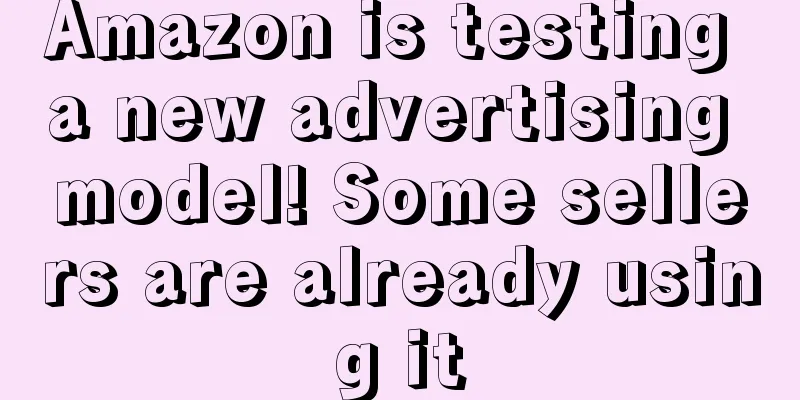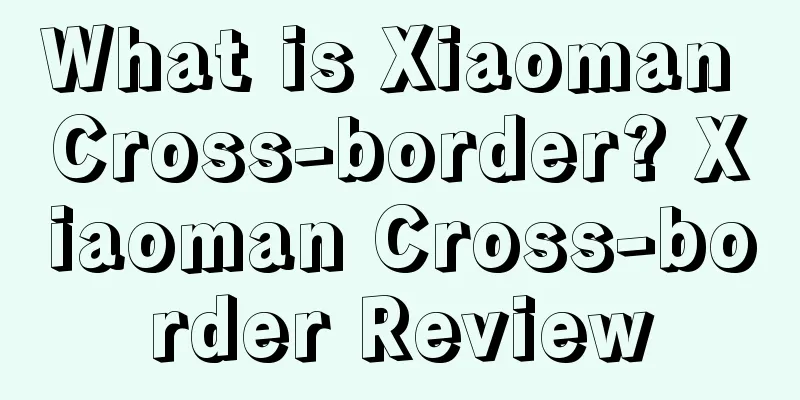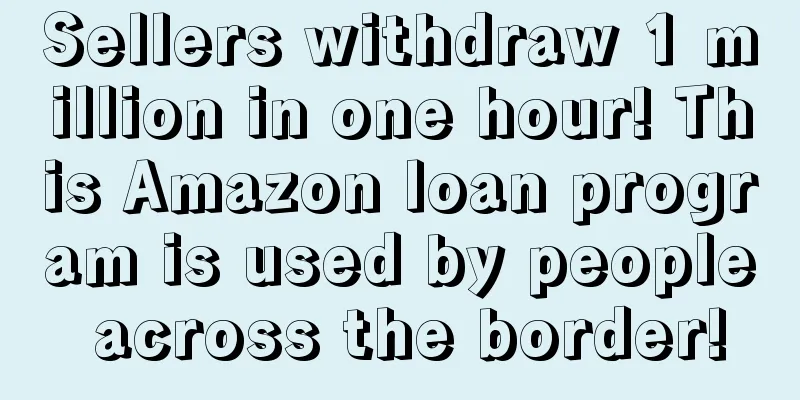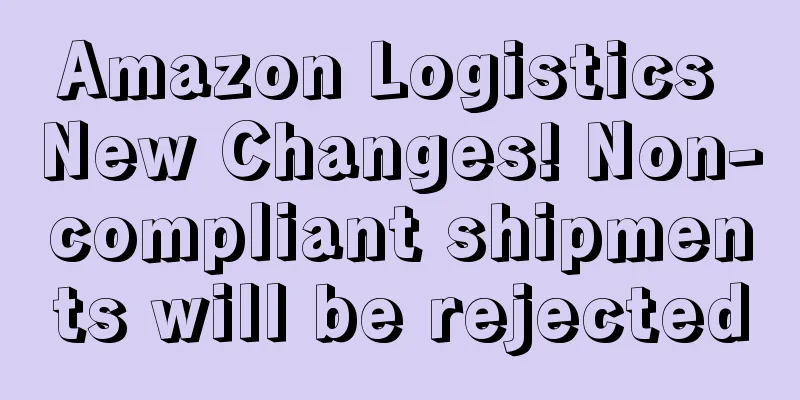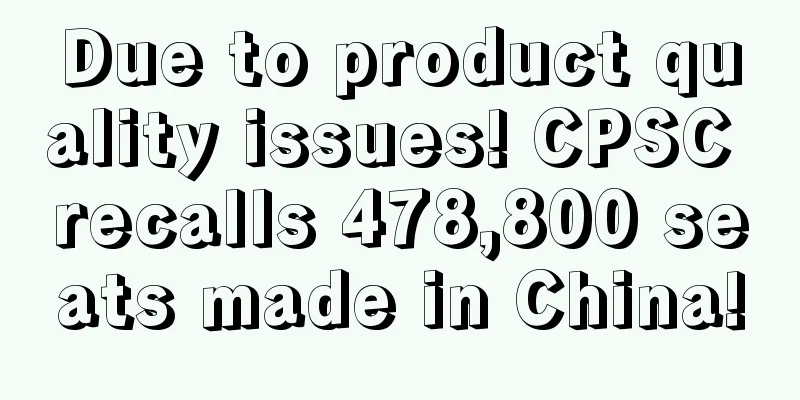Amazon's Black Friday is turning into "Double Eleven" as orders collapse and profits plunge

|
According to the latest data released by Adobe Analytics, the 2024 US holiday shopping season performed well, with online spending reaching US$77.4 billion from November 1 to 24, a year-on-year increase of 9.6%. Since November, consumers' shopping enthusiasm has continued to rise, with single-day spending exceeding US$3 billion for 21 days, far exceeding the 16 days in the same period of 2023. For this reason, Adobe predicts that spending on Black Friday (November 29) is expected to reach US$10.8 billion, a year-on-year increase of 9.9%. It is learned that Amazon's Black Friday 2024 has started on November 21, spanning 13 days, which can be called the longest Black Friday in history. However, although the market is optimistic about the consumption expectations of European and American people, since the start of the big promotion, many sellers' ideal scene of double harvest of orders and traffic has not come as expected. Last week, we reported in the article "Black Friday starts with a huge sales boom? Amazon's super low prices "blow up the market!" that Amazon's Black Friday first day was a mixed bag: some sellers took advantage of the big promotion and successfully received a huge sales boom with the added traffic, doubling their sales; while some sellers' orders were like stagnant water, with only the advertising ACOS rising rapidly. Overall, the sales performance on the first day of the promotion was mixed. However, in the eyes of many sellers, this is just an appetizer for Black Friday. In a narrow sense, the real Black Friday is actually November 29, but Amazon and other e-commerce platforms have extended the promotion period. Therefore, many sellers who received few orders on the first day hoped to turn things around in the next ten days. However, contrary to their expectations, as the promotion went on, the traffic also declined step by step. One seller shared that the traffic on his US site has been declining since Black Friday began. "Today is Tuesday, which should have the most orders, but the traffic is not as good as last week, and the prices are all discounted by 15-20%, so there is no profit at all." The seller further revealed that he also spent $1,000 to sign up for the Black Friday Cyber Monday BD, but the effect was minimal, and the number of orders for products from the same store that applied for Black Friday Prime was almost the same. "No profit if you give discounts, but no orders if you don't" has become the main theme of the seller's Black Friday sales so far. The seller's situation also resonated with many sellers: "Sales are getting worse day by day. Sales without discounts are worse than usual, and sales with discounts are not only lower than ACOS." "More than a dozen accounts collapsed, sales were 20% off, advertising doubled, and orders only increased by 10%." "I offered a 40% discount, and my advertising expenses increased by 50% compared to normal, but my sales were cut in half." “We didn’t do flash sales or Prime member discounts. On the 20th, the daily order volume for a single link was close to 150 orders. After the 21st, the daily order volume was halved, and the advertising cost was about 20% higher than usual.” One seller summarized the sales and advertising of the store in the first five days of the promotion:
Some sellers also said that there was no difference between Black Friday and ordinary promotions: "There is no Black Friday feeling here. Even though all products participated in the Black Friday prime discount, sales only increased by 15%, but the advertising fee doubled. It feels like participating in an ordinary 7-day flash sale." Overall, the sales performance of this Black Friday promotion can be summarized into four situations: First, the promotion effect was not as good as expected. The big promotion had a certain boosting effect, and sales increased significantly compared to the eve of the big promotion, but the actual effect was far less than the same period last year. Second, the overall traffic is not strong enough. Although Amazon has extended the promotion period, it has also distracted consumers and weakened the actual promotion effect. During the promotion period, the platform traffic has become weaker day by day. Third, the advertising effect is not satisfactory. While many sellers' orders decrease as the promotion period goes by, the advertising costs are gradually increasing, showing a trend of soaring ACOS and low actual conversion rate. Fourth, profit margins are squeezed. Due to the extension of the promotion cycle and the early rush of other platforms, which led to the diversion of consumers, the price involution of Amazon's Black Friday has further increased this year. In order to grab orders, many sellers have increased their efforts to lower prices, resulting in continuous dilution of profits. However, as of press time, the real Black Friday (November 29) has not actually started, so many sellers believe that the peak of big promotion consumption has not yet arrived. In the context of the overall economic downturn, consumers' shopping decisions are also more conservative, and they usually wait until Black Friday to have a concentrated outbreak. Sellers may also usher in an upward turning point. Judging from the sales performance of sellers so far, the boosting effect of this Amazon Black Friday, which can be called the "longest in history", has declined compared with the same period in previous years. Some sellers believe that the extension of Amazon's promotion cycle is actually a mixed blessing. On the one hand, Amazon's current promotion model is becoming more and more like Taobao and JD.com, with the addition of autumn promotion activities and increased activity time. The advantage is that frequent promotion activities can stimulate consumption, reduce the phenomenon of holding orders about a week before the event, and increase the stability of orders before the holiday. But on the other hand, the negative effects of this model are also very obvious: the increasingly longer event duration distracts buyers' attention and reduces their expectations for the event, resulting in the concentrated explosive growth of orders in previous years being transformed into a week's sales being spread over 12 days. Just as the domestic Double 11 extended the pre-sale one month in advance, Amazon Black Friday also started preheating more than ten days in advance. But from the perspective of consumers, the longer the time, the more rational they tend to be, and the impulse to buy is also very easy to weaken. Instead of squatting and rushing to buy, they are more likely to wait and see. "Originally, there were only two days left and I wanted to take advantage of the discount to buy quickly. But as the promotion lasted longer, people were no longer in a hurry and could add items to cart and compare later. It's not like Member's Day when orders surged after midnight," said a seller. Under the current environment, the economic level of consumers has not increased significantly. Such limited consumption capacity is divided by the long promotion period, which has led to a decrease in the phenomenon of concentrated orders and an increase in the decrease in traffic during the promotion period. A European seller admitted: "The overall order volume has increased by 1-1.5 times, but the sales volume is basically the same as usual, and the categories are getting more and more competitive, and the discounts of various sellers are also very large. It doesn't feel like many times the orders were placed in one day in previous years. The extended promotion cycle gives consumers more time to compare and choose products, which makes buyers more rational and gives them enough time to shop." Of course, a very important part of the reason why Amazon's promotion cycle has become longer is that it has no choice but to do so due to the early encirclement and suppression by powerful competitors such as Temu. But in the final analysis, the fierce competition between platforms will eventually be paid by the sellers. One seller said bluntly: "This actually fully exposes the nature of Amazon's internal only squeezing sellers and not being good at dealing with more aggressive opponents." In the past two years, against the backdrop of a slowdown in the growth of online traffic on the platform and the rapid rise of low-price platforms such as Temu to grab market share, Amazon has launched a series of reform policies, such as implementing inventory performance, launching autumn promotions, and reducing the platform's sales off-season. However, at the same time, this also comes at the expense of sellers' profits: strict inventory control has led to rising FBA costs, and an increase in large promotions has led to intensified low-price competition among sellers, etc. As a result, Amazon sellers have faced various internal and external troubles over the past year. The internal trouble is that Amazon has increased various fees and added new fees, and the external trouble is that other platforms have snatched away customer traffic at low prices. The double pressure has caused sellers' profits to be pushed down to the limit or even negative profits, making their survival situation increasingly difficult. Judging from Amazon's current actions, whether it is extending the promotion cycle, increasing various operating costs, or launching projects such as low-price malls to compete head-on with other platforms, it seems to be quite eager for quick success. In fact, the healthy and long-term development of an e-commerce platform, in addition to being user-centric and continuously enhancing the consumer experience, is also inseparable from the construction of a healthy seller ecosystem. Amazon's "impatience" has become a profit burden that weighs heavily on the shoulders of sellers, causing sellers to have to lower prices in order to grab orders, leaving them no time to take care of quality control and user services, leading to a series of chain reactions such as a decline in quality control. For this reason, Amazon should reduce the pressure on sellers appropriately, allowing them to use their profits and energy to improve product quality and service levels, rather than simply putting pressure on sellers through big promotions and charging policies. In short, from the seller's perspective, instead of engaging in price wars, they should start with the product itself, provide high-quality and innovative products, avoid homogeneous competition and build brand barriers, and find a balance between sales and profits. |
<<: Trump may launch Tariff 2.0, which will have a profound impact on cross-border e-commerce!
Recommend
Shopify lays off 10% of its global workforce! CEO admits misjudgment of consumer trends
It is learned that on July 26, Shopify officially ...
What is Rakuten.de? Rakuten.de Review
Rakuten.de is one of the leading online trading pl...
What is Creator 3D? Creator 3D Review
Shenzhen Chuangxiang 3D Technology Co., Ltd. is an...
What is the Top Products Program? Top Products Program Review
Handled by AliExpress is a key project of AliExpre...
Review of the entire product promotion process: We are currently studying a set of ideas for testing and secondary promotion. It is best to use a "hook behind the door" that has a large market capacity and a very low price for testing.
Alex My C position At the end of February 2023, be...
High inflation can’t stop the passion for shopping! Mexico’s year-end peak season shopping trends
According to the latest research released by Kanta...
Amazon will be hard to do business in 2025! Major changes sellers must read!
The 2024 Amazon Global Selling Cross-Border Summit...
What will happen to the $300 billion tariffs? China and the United States will negotiate again tomorrow!
After Trump restarted the trade friction in May, ...
Shopify's Q4 and full-year revenue growth was strong, but its performance guidance fell short of expectations
It is learned that on February 15, Shopify announc...
What is Giveaway Service? Giveaway Service Review
Giveaway Services is a platform that connects bran...
Is Amazon planning to establish a payment connection? Is the biggest wave of store closures in history coming?
The brand association incident happened not long ...
What is Zhihui Chuangxiang? Zhihui Chuangxiang Review
Shenzhen Zhihui Chuangxiang Technology Co., Ltd. i...
How does Amazon select products? 90% of people don’t know!
What should I pay attention to when selecting pro...
What is Shenmahui? Shenmahui Review
Shenmahui is headquartered in Guangzhou, China. It...
What is FedEx (International Express Group)? FedEx (International Express Group) Review
FedEx is an international express delivery group t...
